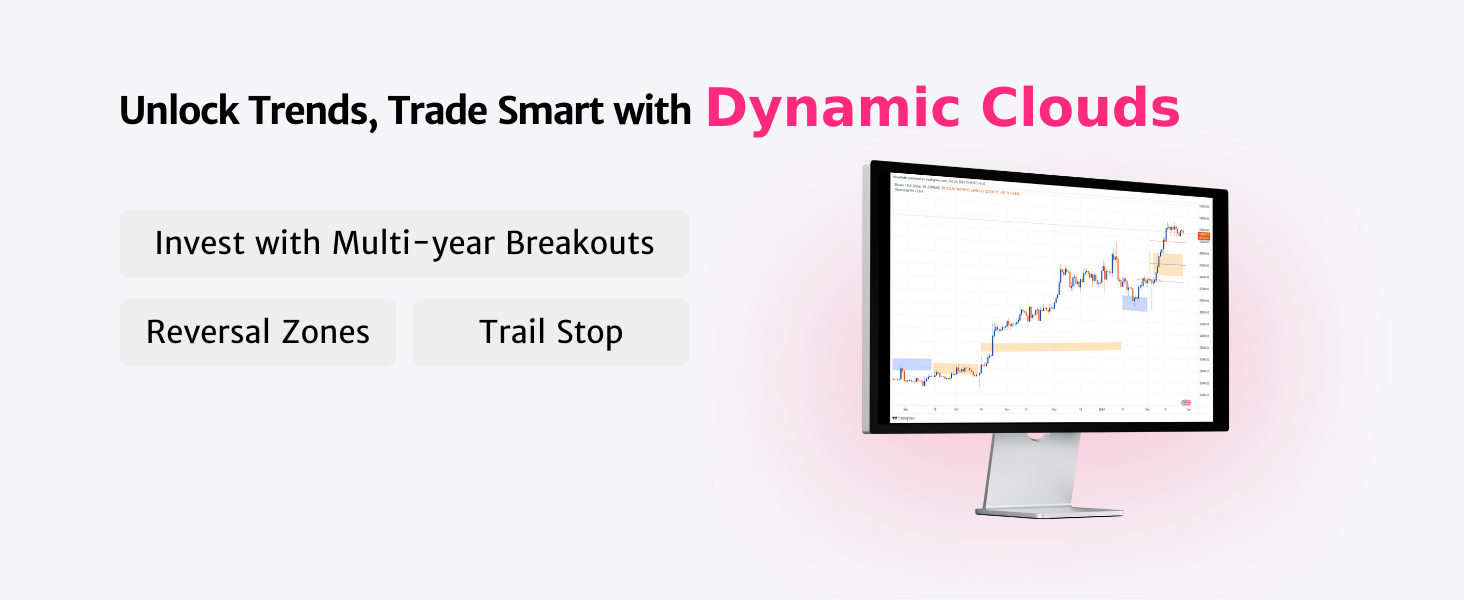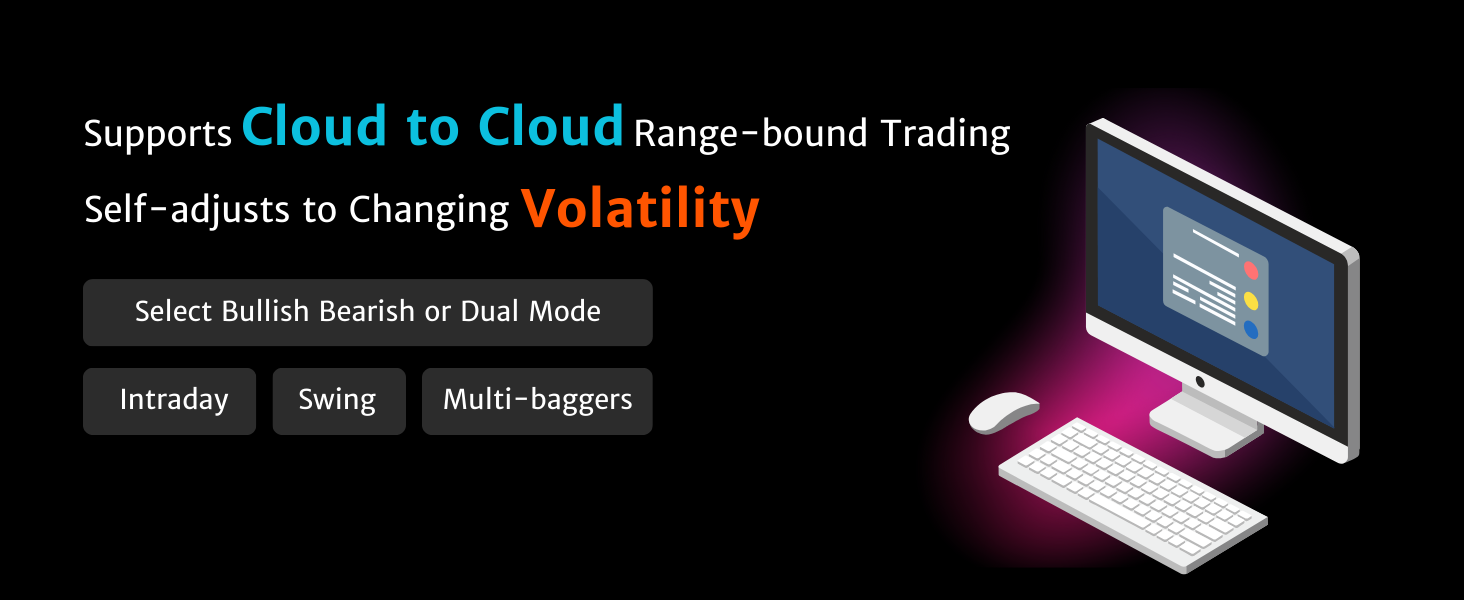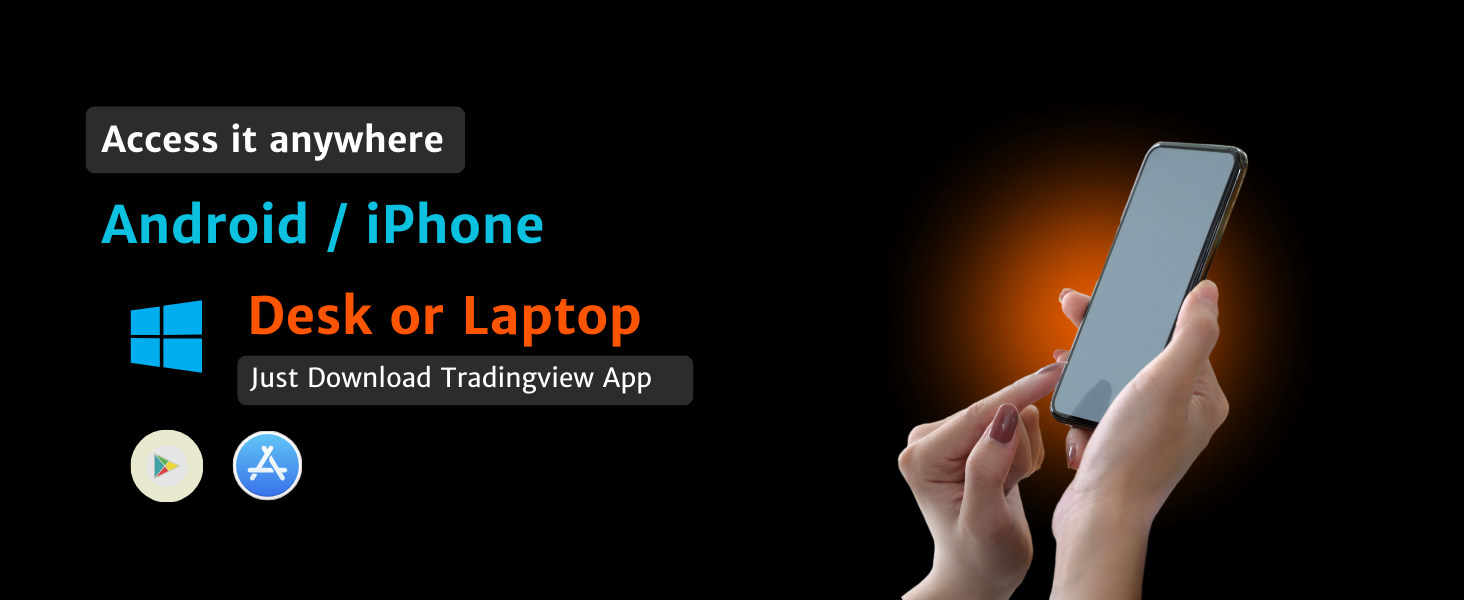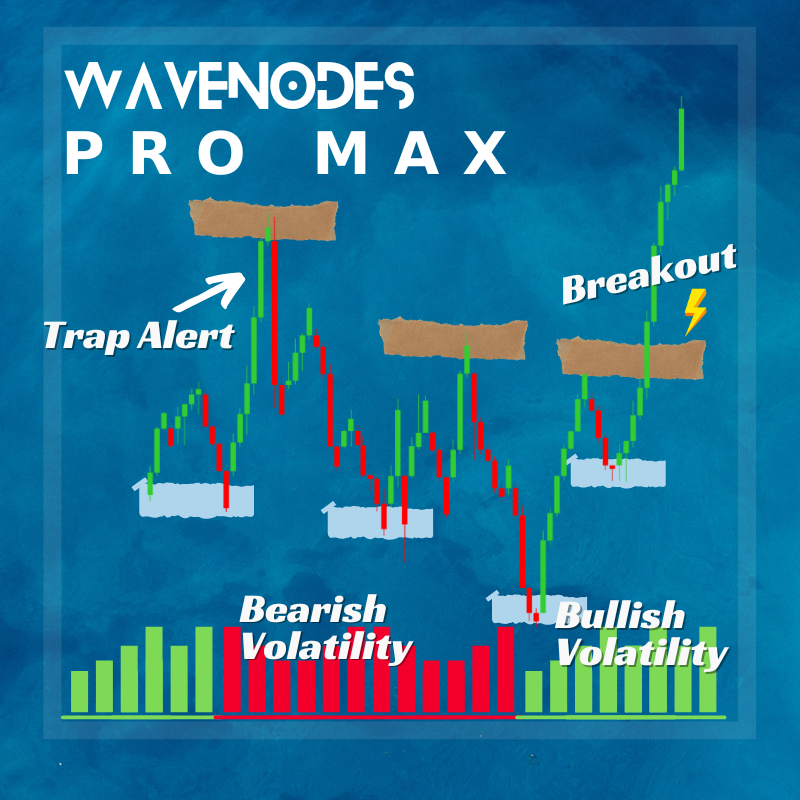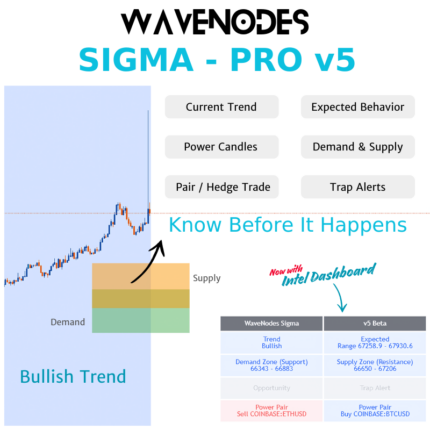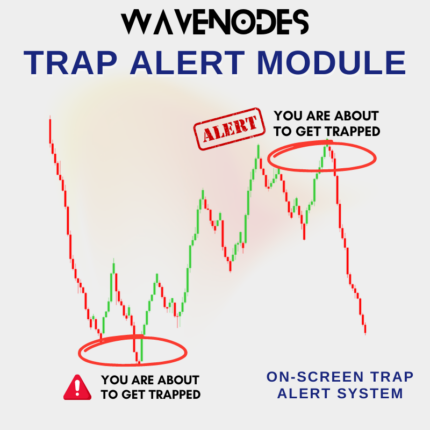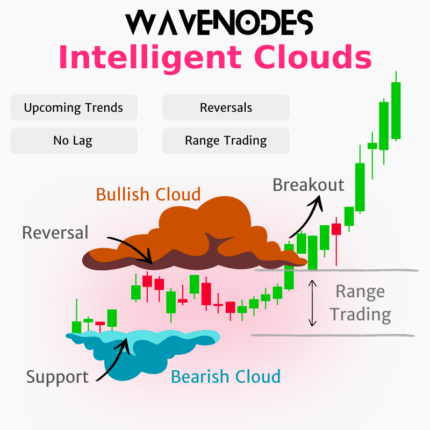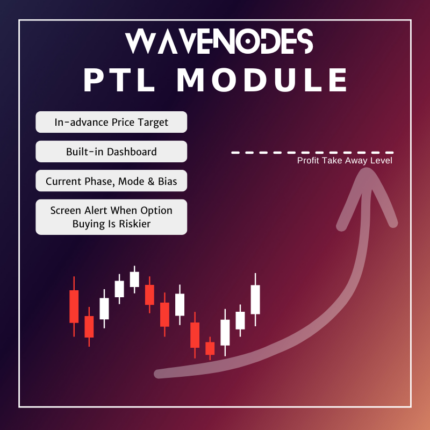Applying WaveNodes Modules: A Step-by-Step Guide
- Visit TradingView.com: Go to tradingview.com in your web browser.
- Log In: Sign in to your TradingView account using your username and password.
- Open Any Chart: Once logged in, open any chart you'd like to analyze.
- Click on "Indicators": Look for the "Indicators" option located in the top bar above the chart.
- Navigate to Invite-only Scripts: Within the Indicators menu, find and select "Invite-only Scripts".
- Select Modules: From the list of available modules, choose the WaveNodes modules you wish to apply to the chart.
- Apply Modules: Click on the selected modules to apply them to your chart.
IWC Module - Intelligent Wave Clouds
The IWC displays two lines and the cloud on the Candlestick chart.
The purposes of these two lines are explained below:
The red-colored line, also referred to as the stop line: This line serves the purpose of identifying when the trend has actually begun and when the wave is about to end. The wave is considered to be in a bullish trend or recovery phase when the price is above the red line. Similarly, a wave is considered to be in a bearish trend or correction phase when it is below the red line.
The blue-colored line, also referred to as the target/retracement cloud mean point: This line turns blue whenever price action suggests strength towards the long side and turns purple when the price action is weak and suggests a preference for the short side. This information can also be validated with the help of the cloud color. If the cloud color is yellow, then it shows strength in price action, while the blue cloud color shows weakness in price action.
Wave Clouds: The cloud represents the expected or possible retracement or correction range for the current wave. Usually, the blue-colored line is the mean of this cloud and is expected to be the high probability point for retracement or correction of the wave.
If the cloud is broken, meaning the candle closes outside the cloud, it can result in very strong price action. Thus, cloud breakouts are usually seen as a strong sign for a good trade opportunity build-up.
AVA Module - Accumulation/Distribution Volume Analytics
The AVA module assesses accumulation and distribution by investors and identifies the following levels:
Red levels in AVA parallel lines - Distribution is occurring. What to do? Either reduce the investment or take profits.
If the price is above the Red levels, there's a high likelihood of a trap or manipulated move; even the best moves can sometimes be traps.
Blue levels in AVA parallel lines - Accumulation is occurring. What to do? Either initiate an investment or increase exposure according to your risk appetite.
If the price is below the Blue levels, there's a high likelihood of a trap or manipulated move; even the best moves can sometimes be traps.
Last Hope Point (Short Length Red Dotted Line): This is the price point where big traders' algorithms are expected to shed investments. Consequently, it's the point below which a trader may witness a sharp price fall. Below the Last Hope Point, it's strongly recommended not to maintain any buy-side position and instead wait for accumulation to begin again or for the price to move above this level.
Target Price Point (Short Length Blue Dotted Line): This is the price level expected to be achieved after accumulation. A breakout above this line is considered a strong sign of another bullish wave forming.
TAM Module - Trap Alert Module
Trap Alert Module can be a valuable tool for traders looking to improve their risk management, decision-making process, and overall trading performance in the market.
It indicates a higher chance of buyers or sellers getting trapped.
A text alert shows up on the chart when there's a potential for getting trapped. Otherwise, it remains inactive.
It's recommended to hedge your trades whenever you see a trap alert on the screen. However, note that this doesn't indicate a reversal pattern.
Colours:
- On-screen alerts are shown in red color by default
PTL Module - Profit Takeaway Level
WaveNodes PTL (Profit Takeaway Level) Module is designed to forecast possible future price levels using price action concepts. It works best in conjunction with WaveNodes IWC (Inter-Wave Correlation) Module to enhance trading decisions and manage positions effectively.
PTL serves as the target for IWC moves and breakouts, indicating the expected price level.
When PTL is not displayed, it suggests a temporary market movement against the forecasted price, prompting the need to hedge positions.
Breakout above the PTL signals further trend buildup, typically with lower position sizes above this level.
Sometimes, the PTL may appear closer on higher timeframes and farther on lower timeframes, with both remaining valid respectively.
Colours:
- Long PTL: Blue colored
- Short PTL: Red colored
Note:
Phase sensitivity settings operate independently in WaveNodes PTL Module and WaveNodes Volatility Meter but follow the same logic. To maintain synchronization, sensitivity settings must be adjusted separately in these two modules.
